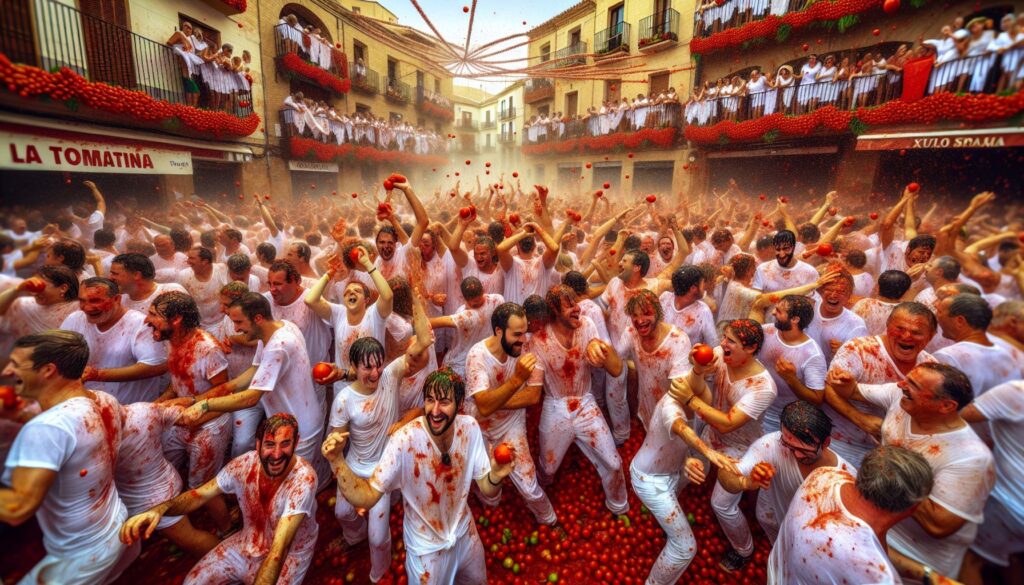As someone who’s explored diverse cultural practices worldwide I’ve discovered that cultural activities offer fascinating windows into different societies. These enriching experiences help us understand and appreciate the unique traditions customs and beliefs that shape communities around the globe.
I’ve found that cultural activities examples range from traditional dance performances and music festivals to religious ceremonies and local craft workshops. Whether it’s participating in a traditional tea ceremony in Japan learning indigenous weaving techniques in Peru or celebrating Diwali in India these experiences create meaningful connections between people and their heritage. Through my extensive travels and research I’ve compiled some of the most engaging cultural activities that’ll help you dive deeper into the world’s rich cultural tapestry.
Key Takeaways
- Cultural activities examples encompass traditional practices, creative expressions, and social customs that showcase a community’s heritage, beliefs, and values
- Traditional arts and crafts, like folk art making and textile weaving, preserve cultural identity through time-honored techniques passed down through generations
- Music and dance traditions, including folk dances and instrumental performances, create powerful connections between communities and help maintain cultural legacy
- Food and culinary practices represent essential cultural activities through traditional cooking methods, festivals, and communal dining experiences
- Religious ceremonies and spiritual customs form the foundation of cultural identity through sacred rituals, festivals, and observances
- Traditional games and sports serve as dynamic cultural expressions that strengthen community bonds while preserving knowledge through play
Cultural Activities Examples
Cultural activities examples the traditions beliefs values art languages customs rituals of a specific community. From my extensive research across diverse societies I’ve identified three core categories that define meaningful cultural engagement:
Traditional Practices
- Participating in tea ceremonies (Japanese Chanoyu Matcha preparation)
- Celebrating religious festivals (Hindu Diwali lighting ceremony)
- Learning traditional crafts (Mexican papel picado paper cutting)
- Practicing indigenous dance forms (Maori Haka performances)
- Following customary rituals (Thai Wai greeting gesture)
Creative Expressions
- Creating folk art (Chinese paper cutting)
- Playing traditional instruments (African djembe drums)
- Performing regional dances (Spanish Flamenco)
- Singing cultural songs (Native American tribal chants)
- Making traditional crafts (Indonesian Batik textile art)
- Preparing cultural cuisine (Italian pasta making)
- Speaking native languages (Learning Mandarin characters)
- Wearing traditional dress (Japanese Kimono wearing)
- Following social etiquette (Middle Eastern hospitality customs)
- Participating in community gatherings (Brazilian Carnival)
| Cultural Activity Type | Examples | Participation Level |
|---|---|---|
| Traditional Practices | Tea ceremonies religious festivals | High engagement |
| Creative Expressions | Folk art music dance | Active participation |
| Social Customs | Cuisine language dress | Daily integration |
These activities connect people to their heritage through direct engagement with cultural elements. Each activity represents a unique aspect of cultural identity preservation.
Traditional Arts and Crafts
Traditional arts and crafts encompass time-honored techniques passed down through generations. I’ve observed how these artistic practices preserve cultural heritage while creating functional and decorative items that tell stories of communities worldwide.
Folk Art Making
Folk art making celebrates cultural identity through distinctive artistic expressions. I’ve documented various folk art forms including wood carving, pottery making, paper cutting (like Chinese jianzhi, Mexican papel picado) and icon painting. Folk artists use locally-sourced materials to create pieces that reflect their community’s beliefs, customs and daily life experiences.
| Folk Art Type | Materials Used | Cultural Origin |
|---|---|---|
| Wood Carving | Hardwoods, chisels | Scandinavian, African |
| Pottery | Clay, wheel, kiln | Greek, Native American |
| Paper Cutting | Colored paper, scissors | Chinese, Mexican |
| Icon Painting | Egg tempera, wood panels | Russian, Byzantine |
Traditional Weaving and Textiles
Traditional weaving incorporates ancient patterns that communicate cultural stories through fabric. I’ve researched distinctive techniques like Peruvian backstrap weaving, Indian ikat and Indonesian batik. Each textile tradition features unique motifs, color combinations and weaving methods specific to its region of origin.
| Textile Type | Technique | Region |
|---|---|---|
| Ikat | Resist-dyeing | India, Indonesia |
| Backstrap Weaving | Portable loom | Peru, Guatemala |
| Batik | Wax-resist dyeing | Indonesia, Malaysia |
| Kente | Strip weaving | Ghana, Ivory Coast |
Music and Dance Traditions
Music and dance traditions serve as vibrant expressions of cultural identity through rhythmic movements and melodic compositions. I’ve witnessed how these performances create powerful connections between generations and communities.
Folk Dancing
Folk dancing encompasses traditional movement patterns passed down through generations in cultural communities. Here are key examples I’ve documented:
- Circle Dances: Greek Syrtos features linked dancers moving counterclockwise
- Partner Dances: Polish Polka incorporates hop steps and turns between pairs
- Line Dances: Lebanese Dabke combines stomping and shoulder-holding movements
- Ritual Dances: Native American Ghost Dance honors ancestral spirits
- Festival Dances: Mexican Jarabe Tapatio celebrates courtship customs
- Harvest Dances: Filipino Maglalatik uses coconut shells as percussion
Cultural Music Performances
Traditional music performances showcase distinct instruments and vocal techniques unique to each culture. Here’s what I’ve observed:
- Instrumental Ensembles:
- Indonesian Gamelan orchestras using metallophones
- Chinese Sizhu groups playing silk and bamboo instruments
- West African drum circles with djembe and talking drums
- Vocal Traditions:
- Mongolian throat singing with multiple pitch production
- Bulgarian women’s choirs performing polyphonic harmonies
| Performance Type | Duration (minutes) | Typical Group Size | Common Venues |
|---|---|---|---|
| Folk Dance | 15-30 | 8-24 | Village squares |
| Ritual Dance | 45-120 | 4-12 | Sacred spaces |
| Instrumental | 30-60 | 5-15 | Concert halls |
| Vocal | 20-45 | 1-8 | Temples/theaters |
Food and Culinary Practices
Culinary traditions represent essential cultural activities that preserve heritage through taste, technique, and celebration. I’ve explored diverse cooking methods and food festivals that showcase the rich tapestry of global gastronomy.
Traditional Cooking Methods
Traditional cooking methods reflect centuries-old practices passed down through generations. I’ve documented distinctive techniques across cultures:
- Earth Oven Cooking (Hangi) – New Zealand Maori communities dig underground pits lined with hot stones to steam food for 6-8 hours
- Clay Pot Cooking (Tajine) – Moroccan dishes slow-cooked in conical earthenware vessels preserve moisture and enhance flavors
- Fermentation (Kimchi) – Korean households use natural preservation techniques to create probiotic-rich vegetables
- Smoking (Smoked Salmon) – Pacific Northwest Indigenous peoples smoke fish over alder wood for 12-24 hours
- Open Fire Cooking (Asado) – Argentine gauchos grill meat on metal crosses around open flames
Food Festivals
Food festivals celebrate cultural identity through communal dining experiences. Here are notable celebrations I’ve researched:
| Festival Name | Location | Duration | Key Features |
|---|---|---|---|
| Feast of San Gennaro | New York, USA | 11 days | Italian street food, processions |
| Vegetarian Festival | Phuket, Thailand | 9 days | Meat-free dishes, rituals |
| La Tomatina | Buñol, Spain | 1 day | Tomato throwing, parades |
| Mid-Autumn Festival | China/Asia | 3 days | Mooncakes, lanterns |
| Oktoberfest | Munich, Germany | 16-18 days | Beer, pretzels, music |
- Night Market Tours – Exploring street food stalls in Taiwan’s Shilin market
- Harvest Celebrations – Participating in rice planting festivals in Japan
- Wine Tastings – Experiencing grape crushing ceremonies in Portuguese vineyards
- Bread Making – Learning traditional methods at French boulangeries
- Spice Markets – Discovering aromatic ingredients in Istanbul’s bazaars
Religious and Spiritual Customs
Through my research into cultural practices, I’ve documented diverse religious rituals that connect communities to their spiritual beliefs. These customs form the foundation of cultural identity across different societies.
Sacred Ceremonies
Sacred ceremonies mark significant spiritual milestones through ritualistic practices. In Buddhist traditions, I’ve observed meditation ceremonies like Vesak incorporating incense burning, chanting mantras in Sanskrit. Native American smudging ceremonies use sacred herbs (sage, sweetgrass, cedar) to purify spaces. Hindu puja ceremonies include:
- Offering flowers to deities
- Lighting oil lamps (deepa)
- Reciting Sanskrit verses
- Performing arati (circular movement of light)
- Distributing blessed food (prasad)
| Ceremony Type | Duration | Participants | Key Elements |
|---|---|---|---|
| Buddhist Meditation | 1-3 hours | 10-50 people | Incense, bells, mantras |
| Smudging | 15-30 mins | 1-10 people | Sacred herbs, feather fan |
| Hindu Puja | 30-60 mins | 5-100 people | Flowers, lamps, food |
- Ramadan: 30-day Islamic observance with dawn-to-dusk fasting
- Passover: 8-day Jewish commemoration with Seder meals
- Diwali: 5-day Hindu festival featuring:
- Light displays
- Rangoli art
- Family gatherings
- Traditional sweets
- Easter: Christian celebration with:
- Sunrise services
- Egg decorating
- Special liturgies
| Festival | Duration | Key Activities | Traditional Foods |
|---|---|---|---|
| Ramadan | 30 days | Fasting, prayer | Dates, iftar meals |
| Passover | 8 days | Seder dinners | Matzah, charoset |
| Diwali | 5 days | Light displays | Ladoo, barfi |
| Easter | 1-7 days | Services, hunts | Hot cross buns |
Language and Literature
Language and literature activities reveal the depth of cultural expression through spoken and written traditions. These practices preserve historical narratives while connecting communities across generations.
Storytelling Traditions
Traditional storytelling encompasses oral histories that pass cultural knowledge through generations. I’ve documented diverse storytelling formats across cultures:
- Griots in West Africa memorize genealogies spanning 100+ generations
- Native American Winter Counts record tribal histories through pictorial calendars
- Australian Aboriginal Dreamtime Stories explain natural phenomena through 40,000-year-old tales
- Celtic Seanchai narrate folklore during traditional Irish gatherings lasting 2-3 hours
- Japanese Rakugo performers deliver comic monologues from seated positions on stage
Poetry Recitals
Poetry recitals celebrate linguistic artistry through structured performances. Here’s what I’ve observed in various cultural contexts:
| Poetry Form | Origin | Duration | Typical Setting |
|---|---|---|---|
| Haiku | Japan | 1-2 minutes | Tea houses |
| Ghazal | Persia | 10-15 minutes | Literary salons |
| Spoken Word | Global | 3-5 minutes | Coffee houses |
| Epic Poetry | Greece | 2-4 hours | Public squares |
| Qasida | Arabia | 20-30 minutes | Cultural festivals |
- Poetry Slams featuring 8-12 performers competing in 3 rounds
- Mushairas gathering 50+ Urdu poets for evening-long sessions
- Renga collaborative poem creation with 5-6 participants
- Bardic Circles where 10-15 poets share original works
- Children’s Verse competitions promoting cultural language preservation
Cultural Games and Sports
Traditional sports and games serve as dynamic cultural expressions that connect communities through physical activity and strategic play. I’ve documented these engaging activities across various cultures:
Traditional Board Games
- Mancala – An African seed-sowing game played on a wooden board with 12-14 pockets
- Go – An ancient Chinese strategy game using black and white stones on a 19×19 grid
- Pachisi – An Indian cross-and-circle board game played with cowrie shells as dice
- Senet – An Egyptian racing board game with carved pieces dating back to 3500 BCE
Indigenous Physical Games
- Buzkashi – A Central Asian mounted team sport using a goat carcass as the ball
- Kabaddi – An Indian contact sport combining wrestling with tag played by 14 players
- Ulama – A Mesoamerican ballgame played with rubber balls on stone courts
- Inuit Games – Arctic survival skill competitions including high kick kneel jump
Cultural Sport Festivals
| Festival Name | Location | Duration | Participants |
|---|---|---|---|
| Highland Games | Scotland | 2-3 days | 3000+ athletes |
| Naadam Festival | Mongolia | 3 days | 1000+ competitors |
| Kila Raipur | India | 4 days | 4000+ athletes |
| Kirkpinar | Turkey | 7 days | 2000+ wrestlers |
- Hopscotch Variations – Chinese Flower Jumping Korean Sabangchigi Brazilian Amarelinha
- String Games – Aboriginal Cat’s Cradle Inuit Ayagaq Native American String Figures
- Tag Games – Japanese Oni Gokko Mexican Toro African Mbube Mbube
- Hand-Clapping Games – Caribbean Miss Mary Mack Filipino Nanay Tatay Korean Dong Dong Dong
These cultural games demonstrate unique approaches to competition social interaction skill development. I’ve observed how they strengthen community bonds preserve traditional knowledge through play.
Expressions of Tradition
I’ve discovered that cultural activities are more than just expressions of tradition – they’re living bridges connecting past present and future. From vibrant festivals to ancient crafts each activity I’ve explored offers unique insights into humanity’s diverse heritage.
These activities aren’t just performances or rituals. They’re powerful tools that help communities preserve their identity while sharing their stories with the world. Whether it’s through dance music food or storytelling cultural activities continue to evolve while maintaining their authentic roots.
I encourage you to explore these rich traditions yourself. By participating in cultural activities you’ll gain a deeper appreciation for the world’s diversity and perhaps discover new perspectives that enrich your own life journey.



